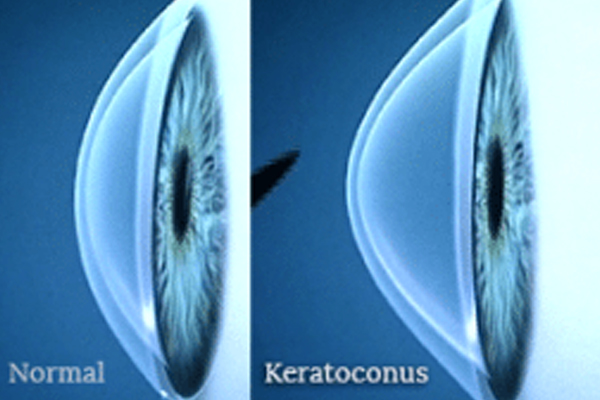
Our eyes contain tiny fibers of protein called as collagen which helps to hold the cornea in place and prevents bulging. When these fibers become weak, they cannot hold the shape and the cornea becomes progressively more cone shaped.
Keratoconus is hereditary. If you have it, then there is a high possibility that your children may also suffer from it. Usually, keratoconus occurs in the teenage years.
The condition occurs in people with certain medical problems, including certain allergic conditions. It’s possible the condition could be related to chronic eye rubbing. Most often, though, there is no eye injury or disease that can explain why the eye starts to change.
The changes in the shape of the cornea may occur quickly or may seem to develop through years.
It effects the person’s vision. Blurred vision,glares and halos at night and streaking of lights are few of the causes of keratoconus.
The changes can stop at any time or continue for decades. In most people who have keratoconus, both eyes are eventually affected, although not always to the same extent. It usually develops in one eye first and then later in the other eye.
Laser vision correction surgery —LASIK– can be dangerous for people with Keratoconus. Anyone with even a small degree of keratoconus should not have LASIK surgery.
There are other treatment options like clear lens exchange, where the human lens of the eye is removed and replaced with an artificial lens.
There is a treatment for keratoconus that is currently undergoing research around the world that might (repeat might) make your cornea stronger and possibly allow for LASIK in the not-too-distant future. This procedure uses riboflavin and UV light to strengthen the cornea. It might be wise to wait for this treatment to be fully developed prior to making any decisions.
With adequate measures, Keratoconus can be treated and taken care of.
Copyright © 1987-2024 Ojas Eye Hospital All rights reserved | Privacy Policy
*Disclaimer: All information on www.lasikindia.com for informational purposes only and is not intended to be a substitute for professional medical advice, diagnosis, or treatment. Always seek the advice of your physician or other qualified health care provider.